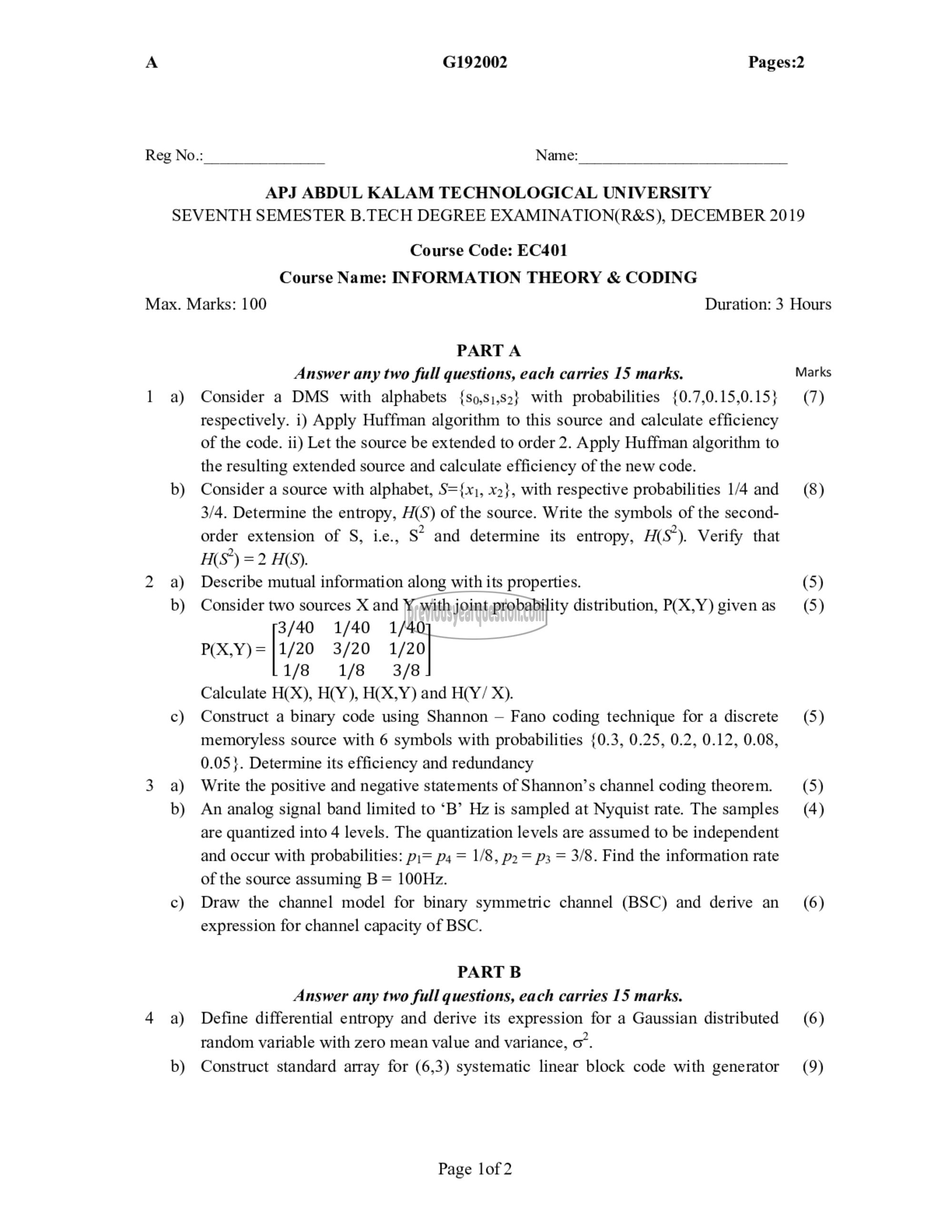APJ ABDUL KALAM TECHNOLOGICAL UNIVERSITY Previous Years Question Paper & Answer
Semester : SEMESTER 7
Subject : Information Theory & Coding
Year : 2019
Term : DECEMBER
Scheme : 2015 Full Time
Course Code : EC 401
Page:1
A G192002 Pages:2
Reg No.: Name:
APJ ABDUL KALAM TECHNOLOGICAL UNIVERSITY
SEVENTH SEMESTER B.TECH DEGREE EXAMINATION(R&S), DECEMBER 2019
Course Code: EC401
Course Name: INFORMATION THEORY & CODING
Max. Marks: 100 Duration: 3 Hours
PART A
Answer any two full questions, each carries 15 marks. Marks
1 a) Consider a DMS with alphabets {so,s1,s2} with probabilities {0.7,0.15,0.15} (7)
respectively. i) Apply Huffman algorithm to this source and calculate efficiency
of the code. ii) Let the source be extended to order 2. Apply Huffman algorithm to
the resulting extended source and calculate efficiency of the new code.
b) Consider a source with alphabet, S={x), x2}, with respective probabilities 1/4 and (8)
3/4. Determine the entropy, H(S) of the source. Write the symbols of the second-
order extension of 5, 1.०., 8 and determine its entropy, H(S’). Verify that
H(S°) = 2 H(S).
a) Describe mutual information along with its properties. (5)
0) Consider two sources X and Y with joint probability distribution, P(X,Y) given as (5)
3/40 1/40 1
رج
P(X,Y)=]1/20 3/20 1/20
1/8 1/8 3/8
Calculate H(X), 11(37), HCX,Y) and H(Y/ X).
c) Construct a binary code using Shannon — Fano coding technique for a discrete (5)
memoryless source with 6 symbols with probabilities {0.3, 0.25, 0.2, 0.12, 0.08,
0.05}. Determine its efficiency and redundancy
3 a) Write the positive and negative statements of Shannon’s channel coding theorem. (5)
b) An analog signal band limited to ‘B’ Hz is sampled at Nyquist rate. The samples (4)
are quantized into 4 levels. The quantization levels are assumed to be independent
and occur with probabilities: وم = 02 ,1/8 = 94 حرم = 3/8. Find the information rate
of the source assuming B = 100Hz.
c) Draw the channel model for binary symmetric channel (BSC) and derive an (6)
expression for channel capacity of BSC.
PART B
Answer any two full questions, each carries 15 marks.
4 a) Define differential entropy and derive its expression for a Gaussian distributed (6)
random variable with zero mean value and variance, o”.
b) Construct standard array for (6,3) systematic linear block code with generator (9)
Page lof2
